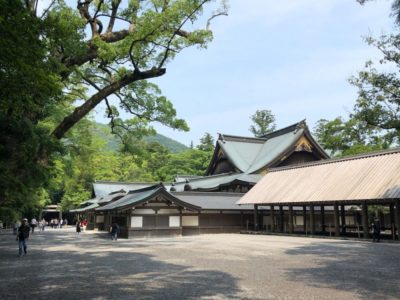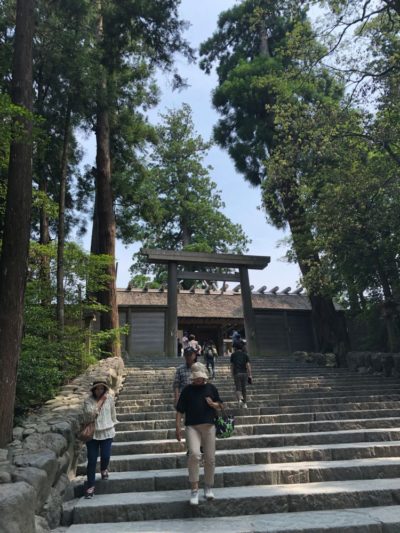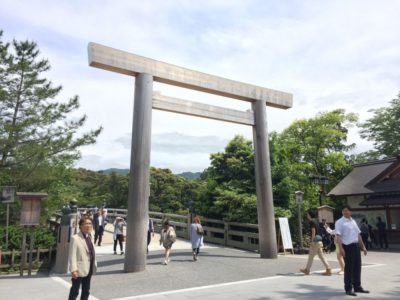Ise Jingu in Mie prefecture is listed as the most important shrine in Japan. It is the central shrine of the Shinto religion, and the goddess of the Sun Amaterasu is worshipped here. What is the history of this shrine, and which rituals are carried out here?

Ise Jingu Overview
Ise Jingu, officially called just ‘Jingu’, includes 125 jinja (Shinto shrines) that are centered around Kotaijingu (Naiku). The Kotajingu is dedicated to Amaterasu-Omikami, and Toyo’uke-daijingu (Geku) is dedicated to Toyo’uke-no-Omikami, the goddess of agriculture and industry. Its area is approximately the same size as the Center of Paris. Every year, more than 1,500 rituals are performed to pray for the prosperity of the Imperial Family. World peace and a great harvest are also important themes.
Amaterasu Okami
Amaterasu-Omikami was originally worshiped in the Imperial Palace by successive emperors of Japan. However, during the reign of the 10th Emperor Sukhin, the Sacred Mirror (the symbol of Amaterasu-Omikami) was transferred from the Imperial Palace.
Then, during the reign of the eleventh Emperor Suinin, the emperor ordered his princess, Yamatohime-no-mikoto, to find the most appropriate place to consecrate and permanently worship Amaterasu-Omikami. After searching in many regions, the princess finally received the revelation that Amaterasu-Omikami should be consecrated and eternally worshiped in Ise. This all happened about 2,000 years ago.
In the era of the 21st Yuryaku Emperor, about 1,500 years ago, Toyo’uke-no-Omikami was, according to another revelation from Amaterasu-Omikami, summoned from northern Kyoto prefecture and consecrated at Ise.
The Sacred Mirror (a symbol of Amaterasu-Omikami) is enshrined within the main sacred shrine in the innermost courtyard and is enclosed with four rows of wooden fences. Pilgrims generally worship the consecrated kami in front of the third-row gate of the fence.
The Ujibashi Bridge spans the Isuzugawa River at the entrance to Naiku and is said to separate the sacred precinct from the everyday world. The architectural style of the Ujibashi Bridge is purely Japanese and its length exceeds 100 meters. This bridge is rebuilt every twenty years as part of Shikinen Sengu. That is a periodic transfer of the divine symbol to a divine shrine that is rebuilt every twenty years.
Rituals at Ise Jingu

The Ise Jingu rituals and ceremonies to pray for the prosperity of the Imperial Family, world peace, and a great harvest are performed by the Jingu priesthood under the direction of the Emperor. Therefore, these rituals and ceremonies performed in Jingu can be called imperial rituals.
The rituals are roughly divided into three groups. The first includes daily and annual rituals performed regularly. The second is extraordinary rituals, which are performed on special occasions for the benefit of the Imperial Family, the nation, or Jingu. The third is the rituals that Shikinen Sengu performs every twenty years. For the most important rituals, the Emperor sends the Imperial messenger to Jingu to dedicate textiles called heihaku.
Your Japan Tour
As seasoned Japan experts, we create perfect Japan package tours including historically significant destinations like Ise Jingu. Check out our group tours and private tours, or contact us to start planning your unforgettable holiday to this fascinating country. Japan is full of once-in-a-lifetime experiences, culture, history, nature, and delicious food!

